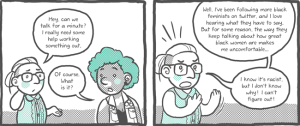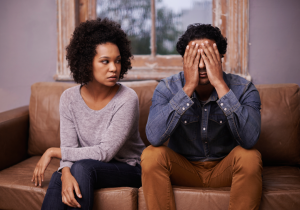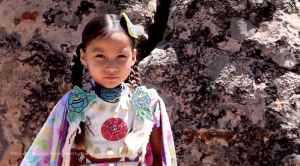The movement to end sexual violence has done some phenomenal work over the years.
Legislation has been passed, systems have shifted, and activists today continue working to dismantle rape culture and eradicate gender-based violence in all forms.
However, when folks talk about major issues impacting survivors of sexual and domestic violence, there is one massive issue that often goes unnoticed in mainstream organizing: jurisdiction.
Jurisdiction, at its simplest, refers to who has the authority to respond to, investigate, and prosecute a crime.
Jurisdiction is typically determined based on geographical location (for instance, if you’re in New York, then NYPD responds; if you’re in LA, then LAPD responds).
And jurisdiction – and, by extension, the entire criminal justice system – doesn’t work for Native Americans and Alaska Natives the way that it works for everyone else.
In a nutshell, here’s how criminal jurisdiction works in tribal communities:
Tribes have jurisdiction over their own lands and have the ability to arrest and prosecute folks who commit crimes on tribal lands unless the offender is non-Native.
If someone who is non-Native commits a crime on tribal land, the tribe cannot bring criminal charges against them. The only agency able to press charges is either the state or federal government.
As you might imagine, the state and federal governments are not typically inclined to pursue cases involving non-Native perpetrators and Native victims/survivors.
As a result, a loophole is created where non-Native folks are able to commit violent crimes against Native people with no consequences.
This is a huge problem when it comes to addressing violence in Native communities since the US Department of Justice reports that at least 86% of sexual assaults against Native women are committed by non-Native perpetrators.
It’s a fucked up situation – and folks who aren’t Native often aren’t aware that it even exists.
If you’re wondering how this legal loophole came to be, what’s being done to address it, and how you can incorporate jurisdictional awareness into your own advocacy and activism, you’re in luck – that’s what this article is for!
Here are four of the most important things for you to know about jurisdiction in Native communities.
1. Tribes Are Sovereign and Therefore Have Their Own Criminal Justice System
There is a lot of complex and obscure legal information related to tribal sovereignty and jurisdiction. As such, I’m not going to be able to cover it all. But this will get you started and provide context for how we got to our present state of affairs.
Sovereignty, in short, recognizes the inherent right of tribes to govern themselves, to manage affairs impacting their members, to control tribal lands, and to handle tribal economics.
Because tribes are sovereign, they have jurisdiction over crimes that happen on the land they control.
This land is referred to as Indian Country, which is the (albeit exclusive) language that has to be used when formally discussing legal topics like jurisdiction.
In addition to jurisdiction, tribes also have the right to have their own court systems, tribal law enforcement, and specific tribal codes that handle issues that arise on tribal land.
Being sovereign also recognizes that tribes have a government-to-government relationship with the US federal government.
Now, tribes have always been sovereign. It’s well documented that tribes had their own governance structures pre-colonization, so it makes sense to recognize tribal nations as just that – nations with the inherent ability to govern their own affairs.
There is extensive legal backing that supports and affirms tribal sovereignty, dating back to Supreme Court cases in the 1820s. There’s also a wealth of writing that clarifies the relationship between tribes and the US government.
All of this can be helpful for cultivating a more in-depth understanding of sovereignty and jurisdiction, as well as seeing how you can include these issues in your own activism and advocacy.
If you have the privilege of not already having had to learn about jurisdiction issues in Indian Country, it’s on you to do the work to educate yourself beyond just this article.
For the purposes of this article, though, just know that tribes are sovereign, and as sovereign nations they have the right to handle issues within their communities.
2. The US Government Intentionally Undermined Tribal Jurisdiction
Tribes are sovereign, but the US has an unfortunate history of trying to undermine that sovereignty and chip away at Native self-governance.
One of the big blows to tribal sovereignty, and the one that continues to prevent tribes from exercising their jurisdiction over non-Natives, was the Supreme Court ruling in the 1978 case of Oliphant v. Suquamish.
The basis for the case was a White dude assaulting a tribal police officer, and then claiming that the tribe shouldn’t be allowed to prosecute him because he was White.
It’s a really racist premise based on stereotypes about Native justice systems being inferior or unable to actually achieve just verdicts, but that didn’t stop the Supreme Court from (surprise) agreeing with the White man.
The Supreme Court handed down a verdict that stipulated that no tribe has criminal jurisdiction over non-Natives.
Criminal jurisdiction is what deals with crimes and legal punishment, which means that the Supreme Court knowingly created a giant gap in tribes’ ability to exercise their sovereignty.
As a result of the Oliphant v. Suquamish ruling, tribal law enforcement are not legally able to engage, detain, or press charges in criminal court against non-Natives who commit crimes on the reservation.
Their main option is to document what happened and forward a report to county, state, or federal law enforcement or the Attorney General.
Those folks then get to decide whether or not they want to investigate the case, and if they decide not to, then that’s it – case closed, no other options for criminal justice.
So how might the ramifications of this case play out on a daily basis?
A young Native woman is walking home from school and is abducted, blindfolded, and driven to a remote location where she is sexually assaulted. She is later dropped off in a local town off the reservation and decides to report the crime. However, she isn’t able to identify whether any of her attackers were Native, and she isn’t sure if the assault took place on the reservation or not. As a result, tribal police are not able to investigate because they don’t know if they have jurisdiction. A report is forwarded to the US Attorney’s office, but they decline the case, meaning there is no other option for the young woman to have her case investigated.
I want you to really think about how that would feel as a survivor, to know that nobody is going to do anything to protect you or ensure that people who harm you are held accountable.
Survivors everywhere face lack of investment, disbelief, victim-blaming, and other harmful behaviors when they encounter the criminal justice system.
But for Native survivors, racist, sexist, and oppressive ideologies are quite literally written into the law of the land, and it provides a legal cover for non-Native perpetrators.
3. Perpetrators Use the Legal Loophole to Target Native Women and Girls
The US government has intentionally created an environment where Native women and girls are unable to access the criminal justice system in the same ways as other citizens.
A lot of non-Native activists and advocates aren’t aware of the jurisdictional loopholes, but you know who is? Perpetrators.
In the example I shared earlier, the system was clearly stacked to avoid non-Native perpetrators facing any consequences for their actions – and perpetrators know it.
I heard one story where tribal law enforcement received a call about a violent situation, but when they arrived, they were confronted by a non-Native perpetrator who laughed at them and flat out said, “You can’t do anything to me – I’m not Indian.”
I’ve seen disgusting forums on the Internet where perpetrators coach each other and spread the word about the jurisdictional loophole, encouraging each other to go to reservation communities to rape and assault Native women and then leave consequence-free.
The policies and laws limiting tribal jurisdiction when non-Natives commit crimes is killing Native women and children – and by extent, their communities.
And if we aren’t talking about how Native women and Native communities are uniquely and disproportionately impacted by violence, we are complicit.
Just because mainstream activists have been sleeping on this issue doesn’t mean that perpetrators have been. And there needs to be some serious reflection done by individuals and organizations to figure out how to stand in solidarity and make sure that this issue does not continue to go unaddressed.
4. Native Activists Have Been Fighting to Close the Loophole and Protect Native Communities
There’s a lot of doom and gloom when we talk about jurisdiction and violence against Native folks. The systems are set against us, our communities are facing horrifically high rates of violence, and the vast majority of the country doesn’t seem to care.
But there are also incredible stories of resistance and resilience, of folks doing powerful work to address the institutional failings and build healthy Native communities.
We’ve explored ways to hold perpetrators accountable outside of the criminal justice system, developed advocacy programs and strategies that are culturally grounded and aware of the unique barriers Native survivors face, and worked to shift community norms and responses to violence.
One of the most significant moments in recent years was the 2013 reauthorization of the Violence Against Women Act (VAWA).
The 2013 revision included specific provisions recognizing tribes’ inherent authority to exercise criminal jurisdiction in cases of domestic violence or when a protection order is violated, regardless of whether or not the perpetrator is Native.
There are a few limitations on the provision; it only covers spousal violence, dating violence, and criminal violations of protection orders. Tribes still don’t have criminal jurisdiction over cases of sexual violence (unless it occurs within the context of an intimate relationship) and are unable to handle cases where they cannot prove a pre-existing marital or dating relationship between the perpetrator and survivor.
However, VAWA 2013 represents a huge shift that many thought was impossible. To get the act passed, even with the strict limitations on tribal authority, was an uphill battle.
Representatives (mostly White men, shockingly) expressed concerns that they could accidentally drive onto a reservation and be arrested willy nilly – to which advocates and survivors replied, “1) That makes no sense based on what is in the act, and 2) just don’t drive onto a reservation and violate protection orders or commit violent acts, and you’ll be fine.”
The pushback can largely be summed up, in my opinion, as fear of accountability by those who have historically exploited systems with no repercussions.
The struggle continues today, as the courts have decided that perhaps tribes shouldn’t have civil jurisdiction over non-Natives either (see the Dollar General case).
For all of the amazing work that survivors, advocates, and community members are doing to create safety in our communities and force accountability for perpetrators, we still face intense backlash and resistance from those in power.
And that’s where you come in.
Bring this information into your own advocacy and activism. Oftentimes, there are organizations and folks doing Native-specific advocacy and organizing who aren’t overly involved in what the mainstream folks are doing because let’s be real: We’re already grappling with systems that want to see us dead, we don’t have time for white tears, mainstream agencies who think their way is the only way, and all the racism and colonialism that can come along with mainstream organizations.
To make partnerships and solidarity less exhausting and traumatizing for Native folks doing this work, do your own homework.
Are there tribes in your state? If so, look at whether they’re exercising their criminal jurisdiction rights under VAWA 2013.
If you’re doing college activism around sexual assault, think about tribal colleges and whether the experiences of students there are reflected in the changes you’re pushing for.
Investigate whether there are culturally specific (not just culturally sensitive) service providers in your community, and build those relationships. See what those organizations are doing, and figure out if there are ways you can support them. Amplify their voices in solidarity (in ways that they feel would be helpful).
If you’re not sure where to start, seeing whether there are tribal coalitions in your area can help you start getting connected.
There are so many opportunities to make your advocacy and activism more intersectional by including Native survivors and the unique challenges we face.
***
We need folks who are willing to invest in creating change at every level and not turn away from the violence and injustice we face every day of our lives, so stand with us; there is so much work still to do.
And if you would like to learn more about this topic, check out the following:
- To the Indigenous Woman, spoken word by the 1491s (seriously, watch this!)
- Maze of Injustice Report, detailing barriers Native survivors face
- Safety for Native Women, dives deep into VAWA and jurisdiction
- Jurisdiction in Indian Country Cheat Sheet
- Sliver of a Full Moon, a play done about the experiences of Native women and the process of passing VAWA 2013
[do_widget id=’text-101′]
Mahealani Joy is a Contributing Writer for Everyday Feminism and kanaka maoli queer woman currently living in the Midwest. They are involved in organizing to end sexual violence against Native women and finding ways to strengthen Indigenous communities.
Search our 3000+ articles!
Read our articles about:
Our online racial justice training
Used by hundreds of universities, non-profits, and businesses.
Click to learn more





















